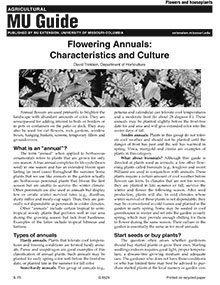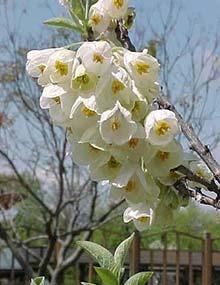

Gardening in the Shade, Page 08
Revised
Discover small trees ideal for shaded urban yards, including dogwoods, serviceberry, and hornbeam, with details on size, soil needs, and fall color.
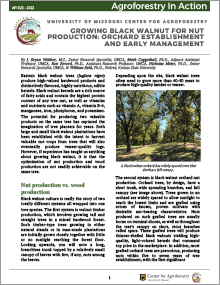
Growing Black Walnut for Nut Production: Orchard Establishment and Early Management
Revised
Eastern black walnut trees (Juglans nigra) produce high-valued hardwood products and distinctively flavored, highly nutritious, edible kernels.
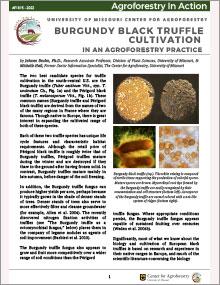
Burgundy Black Truffle Cultivation in an Agroforestry Practice
Revised
Editor's note
The following abstract describes a publication that is intended for distribution as a downloadable PDF.
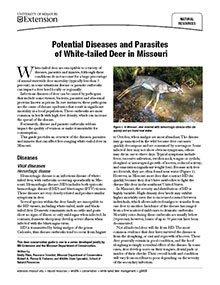
Potential Diseases and Parasites of White-tailed Deer in Missouri
Reviewed
White-tailed deer are susceptible to a variety of issues. Visit our site to learn about Potential Diseases and Parasites of White-tailed Deer in Missouri.
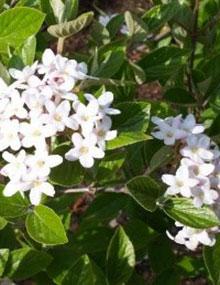
Gardening in the Shade, Page 03
Revised
Discover shade-tolerant deciduous shrubs like arrowwood viburnum, bottlebrush buckeye, and oakleaf hydrangea to enhance your shaded garden spaces.
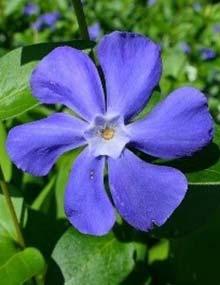
Gardening in the Shade, Page 06
Revised
Discover plants that thrive in low-light conditions and learn how to enhance your shaded garden with suitable selections and care tips.
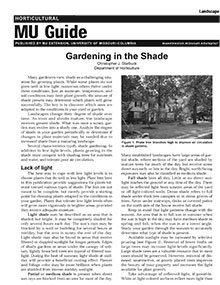
Gardening in the Shade
Revised
Many gardeners view shade as a challenging situation for growing plants. While some plants do not grow well in low light, numerous others thrive under these conditions. The key is to discover which ones are adapted to the conditions in your yard or garden.
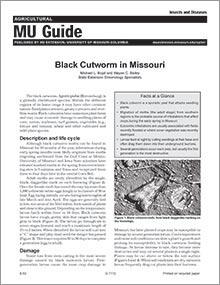
Black Cutworm in Missouri
Reviewed
Black cutworm larvae damage seedlings by cutting stems at night, causing stand loss in crops like corn, soybeans, and cotton.
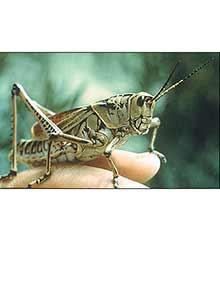
Grasshopper Control in Missouri Forage Crops and Pastures
Revised
Protect forage crops and pastures from grasshopper damage with early detection and control strategies tailored for Missouri's conditions.
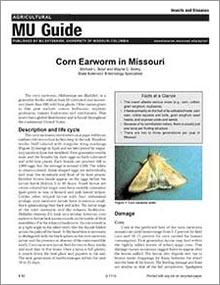
Corn Earworm in Missouri
Revised
Learn about corn earworm's impact on Missouri crops, its life cycle, and management strategies to protect yields from this pervasive pest.
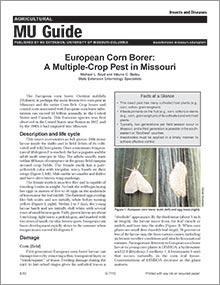
European Corn Borer: A Multiple-Crop Pest in Missouri
Revised
Learn how the European corn borer affects crops like corn, cotton, and grain sorghum in Missouri. Explore its lifecycle, damage, and management strategies.
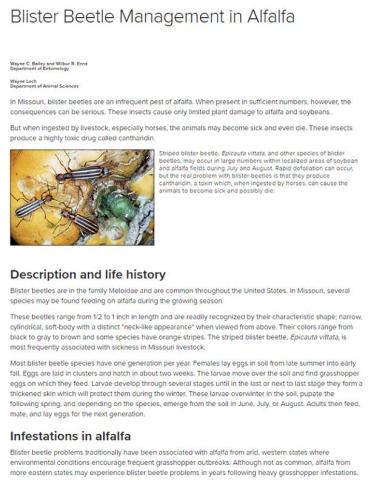
Blister Beetle Management in Alfalfa
Revised
Blister beetles in alfalfa pose a serious risk to livestock due to cantharidin toxicity, especially during summer harvests. Learn how to manage infestations.
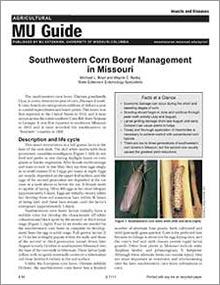
Southwestern Corn Borer Management in Missouri
Revised
This guide outlines the life cycle, damage patterns, and management strategies for the southwestern corn borer in Missouri.
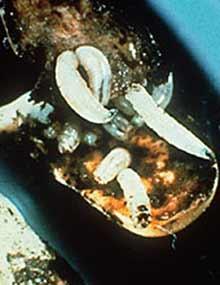
Seedcorn Maggot
Reviewed
Learn how to identify and prevent seedcorn maggot infestations in crops like corn and soybeans, which can damage seeds and reduce yields.
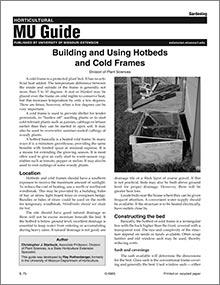
Building and Using Hotbeds and Cold Frames
Revised
A coldframe is a protected plant bed & a hot bed is basically a heated coldframe. Visit our site to learn about Building and Using Hotbeds and Cold Frames.
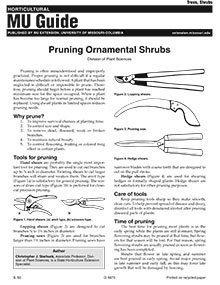
Pruning Ornamental Shrubs
Revised
Learn effective techniques for pruning ornamental shrubs, including timing, tool selection, and maintenance tips to promote healthy plant growth.
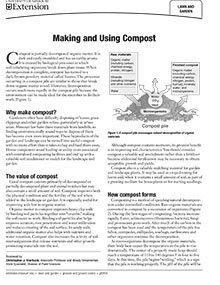
Making and Using Compost
Reviewed
Making compost transforms garden waste into a nutrient-rich soil conditioner, enhancing soil structure and fertility while reducing landfill use.

Short-Term Operating Plan for Farms and Ranches
Revised
Download a short-term operating plan workbook you can use to prepare your farm or ranch for operating if decision makers are unable to make short-term choices.

Preserve It Fresh, Preserve It Safe: 2022, No. 4 (July/August)
New
Ensure safe food preservation with expert advice on testing canner gauges, preserving zucchini, and freezing summer squash for later use.
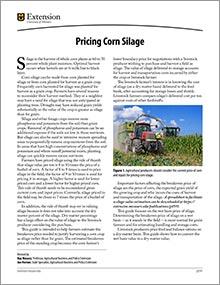
Pricing Corn Silage
Revised
Learn how to price corn silage whether it's in the field or delivered to storage or the feed bunk, and see how drought can damage a corn silage crop.
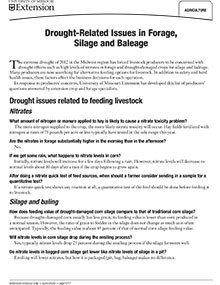
Drought-Related Issues in Forage, Silage and Baleage
Revised
Get answers to questions about how to feed livestock during drought. Read about nitrate toxicity, corn silage and baleage, forage grazing and feeding hay.
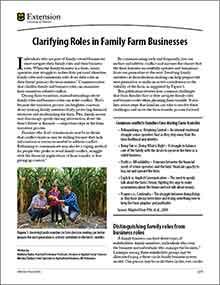
Clarifying Roles in Family Farm Businesses
New
Strong family businesses communicate to separate their family roles and expectations from business roles. Read about common family business conflicts and find steps to address tension in this publication.
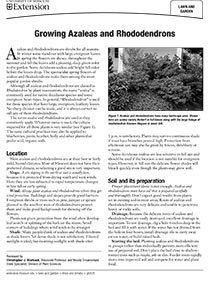
Growing Azaleas and Rhododendrons
Reviewed
Discover essential tips for selecting, planting, and caring for azaleas and rhododendrons in Missouri's challenging climate.
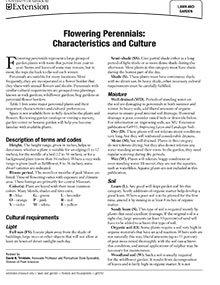
Flowering Perennials: Characteristics and Culture
Revised
Flowering perennials persist from year to year and are suitable in a flower border shared with annual plants or grouped in special plantings. Learn about some major perennials and their important characteristics and cultural preferences in this guide.
